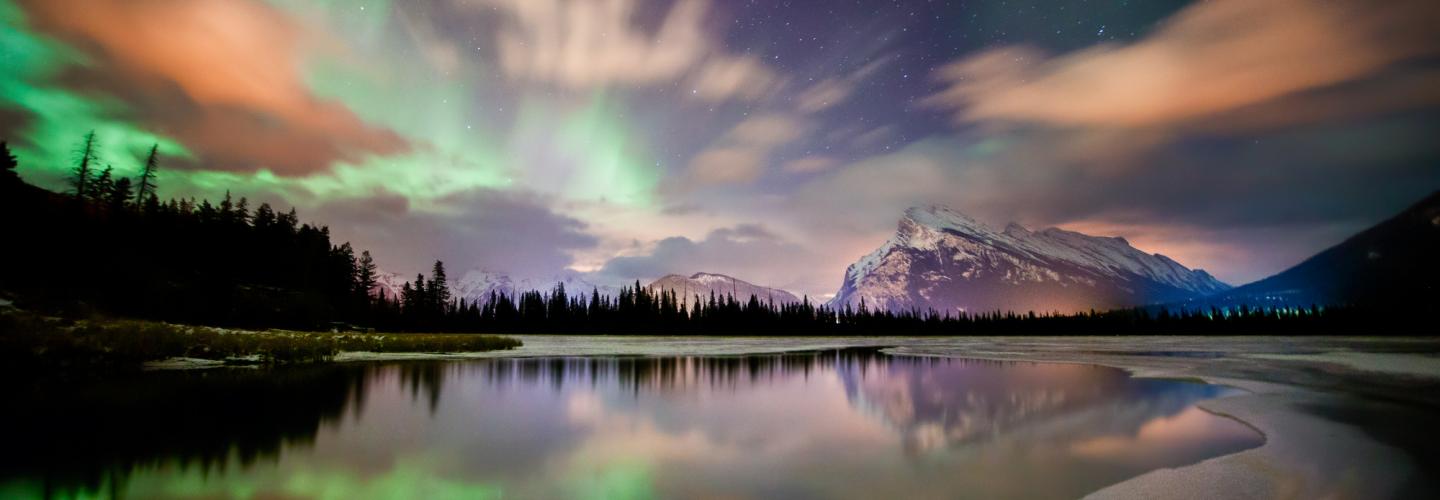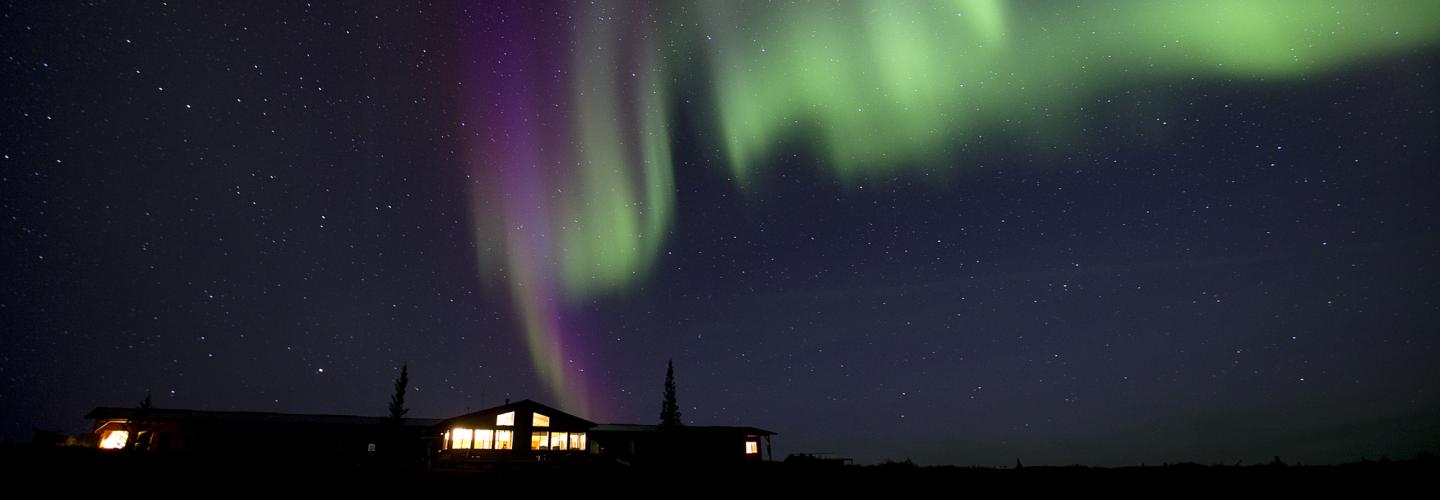January and February have the most reliable snowfall, making it ideal for not just skiing, but also ice-fishing, snowshoeing, and snowmobiling. You also have a good chance of seeing the Northern Lights.
Plan your bucket list vacation with more trip inspiration on Canada Travel website.

The aurora borealis has all the characteristics of an ingénue: Elusive, gorgeous, often plays hard to get. Also known as the Northern Lights, this natural phenomenon is so stunning and ethereal, people travel from across the globe for a chance to catch a glimpse of it.
Here’s your guide to the very best places to see the aurora borealis across Canada, how and when to catch a show, and tips on making the most of the experience — whether it’s from a cushy viewing capsule in a Northwest Territories teepee village or remote mountain base camp in Newfoundland and Labrador.
The aurora borealis effect happens in the Northern Hemisphere when the sun’s electrically charged particles, riding on a solar wind, enter the Earth’s atmosphere and collide with gases — namely oxygen and nitrogen. When the sun is at its most active is when you’re most likely to catch a spectacular display. The name comes from Aurora, the Roman goddess of dawn, and Boreas, the Greek god of the north wind. Much of Canada’s North lies beneath the Northern Hemisphere’s Auroral Oval, a hot spot for activity.
Where and when is it seen?
It’s possible to see the Lights (almost) anywhere in Canada during all four seasons. But the North is the best place to see them, where they are the most active, most of the time. And the best venues are remote communities with little or no light pollution. You can’t see the Lights through the clouds, so if you’re near the coast — say in British Columbia — steer clear of coastal clouds and head north. After that, you want to seek out higher ground.

Winter (December to March) is often the luckiest season, thanks to more hours of darkness each day and frequent cold, clear nights. The best time? Around midnight: 10 pm to 2 am is the window, so get ready to stay up late. Though you may be able to see them in any Canadian city or province (if you’re lucky!) the following are the best spots for a sighting.
Northwest Territories
The very best place to see aurora borealis in Canada — if not the world — is the Northwest Territories, where they’re generally visible 240 nights a year. The optimal timeframe is either fall or winter (though summer is pretty good, too).

The Lights are especially dramatic in winter, contrasted against a frozen, white wonderland. The most convenient way to take in the show is in cozy comfort at Aurora Village, a teepee village just outside Yellowknife. Specially designed for aurora observation, the place is equipped with spacious wood-stove heated teepees, fur-lined sofas, and warmed viewing capsules that recline.
Manitoba
Northern Manitoba is in the sub-Arctic Circle bordering Hudson Bay. Up here, you’ll find Churchill, which bills itself as “one of the top three places on the planet” to see the Lights.. In fact, scientists from around the globe flock to the town of 850, famed for polar bears, to study the aurora. But the thing that makes a visit even more special is that you can combine it with bucket list wildlife viewing — think belugas, polar bears, Arctic foxes, and more. Via Winnipeg is the best route, pausing at the Manitoba Museum to learn more about the Lights and how best to photograph them.

Aurora high season in Churchill is February and March because of the extreme cold, which can drop to 40 below zero. Go with experienced operator Frontiers North, heading out around midnight in a heated Tundra Buggy kitted out with a bar. Pack extra batteries, which can fizzle in the plunging temps, and rent clothing from the Polar Inn & Suites. Snap pics of the often explosive display or better yet, just take it in so you don’t miss a thing.
Yukon
Since the Gold Rush days, the Wild West Yukon has been the spot for fabled adventure. Dabble in a few of them — dogsledding, fat biking, roughing it out in the open prospector-style — and catch the Lights while you’re there from September to April. In summer the night sky is not dark enough, thanks to the Midnight Sun, though this is also a great reason to visit!

In winter, Northern Tales hosts a variety of aurora packages and tours with activities such as snowshoeing, ice fishing, snowmobiling, and dog mushing. Cozy up in Arctic Range Adventures’ AuroraCentre with your choice of a plush, insulated yurt or cozy First Nations-style teepee. Add wildlife viewing, dogsledding, and a soak in Takhini Hotsprings to round out the fun. Mountain biking pros Boréale Explorers lead guided snow biking-aurora packages, as well as snowmobiling or dogsledding-aurora combos out of their stylish eco-lodge and Yurtville basecamp near Whitehorse.
Nunavut
Open expanses of tundra and a far-north location make Canada’s Arctic prime aurora viewing country. Spring and summer in Nunavut is the time of seemingly endless daylight, with 16 hours a day May to August and 24 hours of sunshine daily in June and July. So you want to go between October and April when the dark days are long. December, for instance, has just four hours of daylight. This time of year is when locals enjoy frequent, rippling aurora displays.

Consider a journey to a remote traditional Inuit community like Kimmirut, where you can kayak and see icebergs. Or visit Whale Cove, where you can fish and spot beluga whales after a night of aurora viewing.
Resources
British Columbia
Best Places to See the Northern Lights in January 2020
Travel Canada
The 8 Best Places To See The Northern Lights In Canada
Where To See The Northern Lights In Canada This Winter



